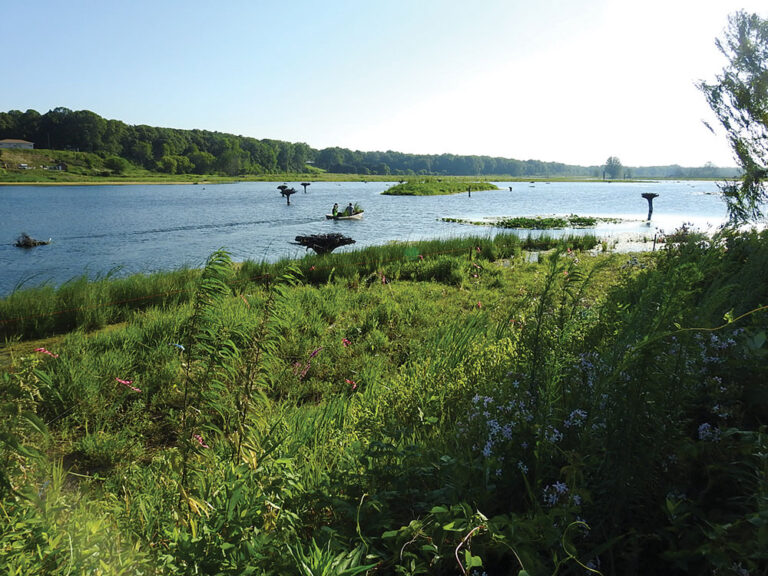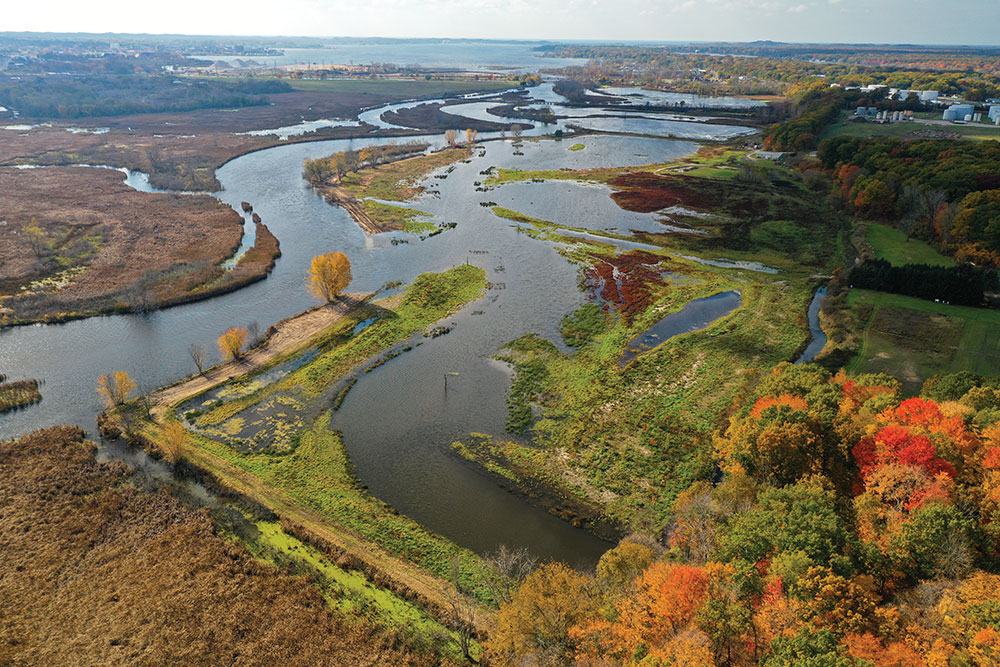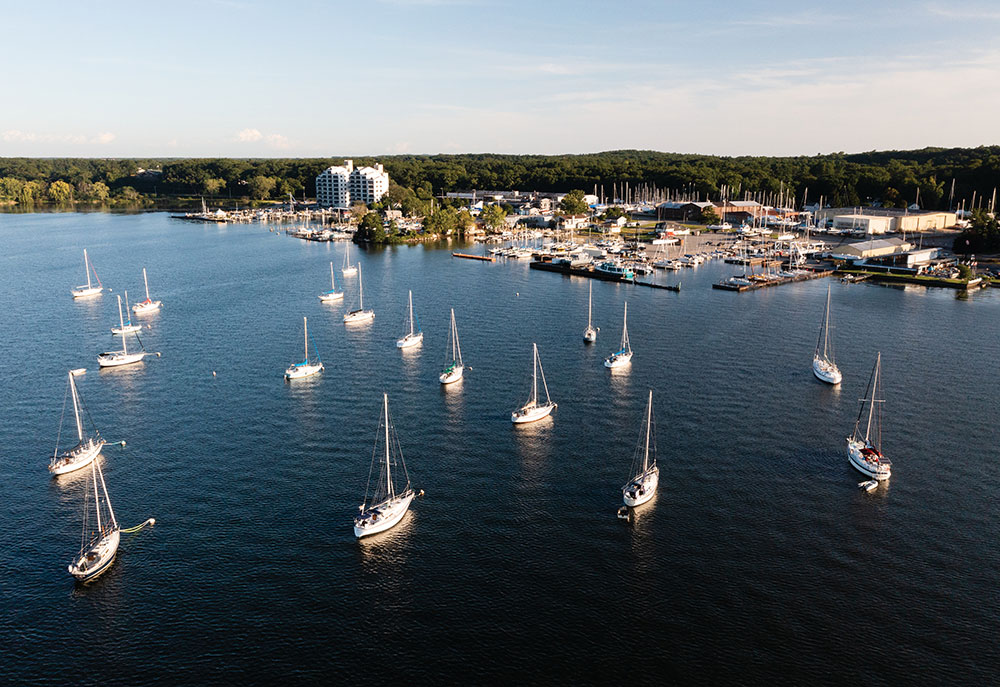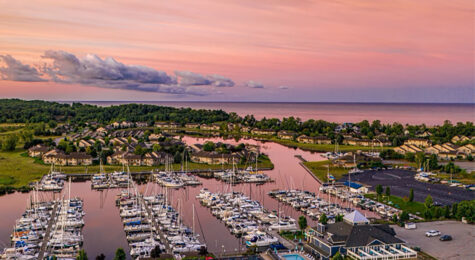Restoring the Wonderful Waterways of Muskegon
Leaders and residents in West Michigan have spent $80 million to revive and protect vital habitats and shorelines.

The Muskegon Lakeshore is teeming with natural beauty, but it takes dedication and effort to ensure those areas are well-maintained and protected.
Over the past 35 years, dedicated locals have invested more than $80 million to restore more than 134 acres of habitat and 6,000 feet of shoreline.
Muskegon Lake Once a Dumping Ground
Muskegon Lake is a 4,149-acre drowned river mouth lake that flows into the eastern shore of Lake Michigan. For more than a century, Muskegon Lake had experienced abuse, starting with the lumber mills that dumped sawdust and lumber debris in the lake, followed by foundries and heavy industry that dumped pollutants and fill.
But in the early 1970s, environmental activists protested the industries contributing to pollution along the lake. As foundries and factories began closing, Muskegon was left with a mess to clean up.
The lake faced myriad issues, including sediment contaminated with petroleum hydrocarbons, mercury, lead, oil and other metals and chemicals; excessive fill and loss of natural shorelines along Muskegon Lake and large-scale impacts to critical wetlands; high levels of nutrients, solids and toxins entering the lake; and overall degradation of water quality.

Rallying Together
Citizens rallied to create the Muskegon Lake Watershed Partnership (MLWP), which is the local Public Advisory Council.
“The MLWP is a group of dedicated volunteers that has met monthly since the 1980s with the purpose of restoring Muskegon Lake and delisting it as an area of concern,” says Erin Kuhn, executive director of the West Michigan Shoreline Regional Development Commission.
The commission’s mission is to promote and foster regional development in Western Michigan through cooperation among the 120 local governments and regional partners.
“We manage programs in transportation, economic development, environmental planning and local government services to provide assistance to member local governments in addressing regional and public policy issues,” she says.
The restoration of Muskegon Lake was a community effort. Businesses that help fund the nonprofit include Nichols, a distribution service in Norton Shores, and Meijer, a supercenter chain with locations throughout the Midwest.
Cleanup and restoration started soon after Muskegon Lake was designated an area of concern in 1987. One of the largest restoration projects, the remediation of contaminated sediments at Ruddiman Creek, was completed in 2006 at a cost of $14.1 million.
However, it was the launch of the Great Lakes Restoration Initiative in 2010 that provided the funding needed to complete the work. Since then, three additional sediment cleanups – costing more than $32.5 million – have been completed.
In total, four sediment remediation projects have been completed through partnerships with state agencies, industry, local municipalities and other stakeholders at a cost of $46.6 million, with approximately $30.3 million from federal funding and $16.3 million in nonfederal contributions.
The U.S. Environmental Protection Agency as well as the National Oceanic and Atmospheric Administration (NOAA) and other partners have worked to restore habitat surrounding the lake. Key habitat restoration projects have repaired shoreline erosion and removed logging-era sawmill debris.
The projects have led to 134 acres of habitat restoration, over 6,000 linear feet of shoreline restoration and removal of over 150,000 tons of debris and sediment. These GLRI- funded habitat projects cost $22.9 million in total. All told, the sediment remediation and habitat work required for the cleanup of the areas of concern totaled approximately $70 million.

6-1 Return on Investment
Habitat restoration isn’t just good for the environment; it’s good for business.
“There has been a direct link between the restoration of Muskegon Lake and the resurgence of downtown Muskegon and the Lakeside business district,” Kuhn says.
“After decades of efforts and many tens of millions of dollars devoted to the restoration of the Muskegon Lake ecosystem, the Greater Muskegon community celebrates the EPA’s declaration of ‘all management actions complete’ for the Muskegon Lake Area of Concern program,” said Muskegon Mayor Ken Johnson.
“Muskegon Lake is critically important to the well-being of our community, and the City of Muskegon is committed to being a good steward of this precious natural resource.”
An economic impact study of the restoration projects completed along the south shoreline of Muskegon Lake, conducted by Grand Valley State University, documented property value increases not only adjacent to the lake but also up to a half-mile inland, Kuhn says.
“In addition, the study documented a 6-1 return on investment of the dollars spent to restore the lake and soften the shoreline,” Kuhn says.
Get to Know the Muskegon Lakeshore
Want to learn more about living and working in Muskegon? Check out the latest edition of Livability Muskegon Lakeshore, Michigan.



